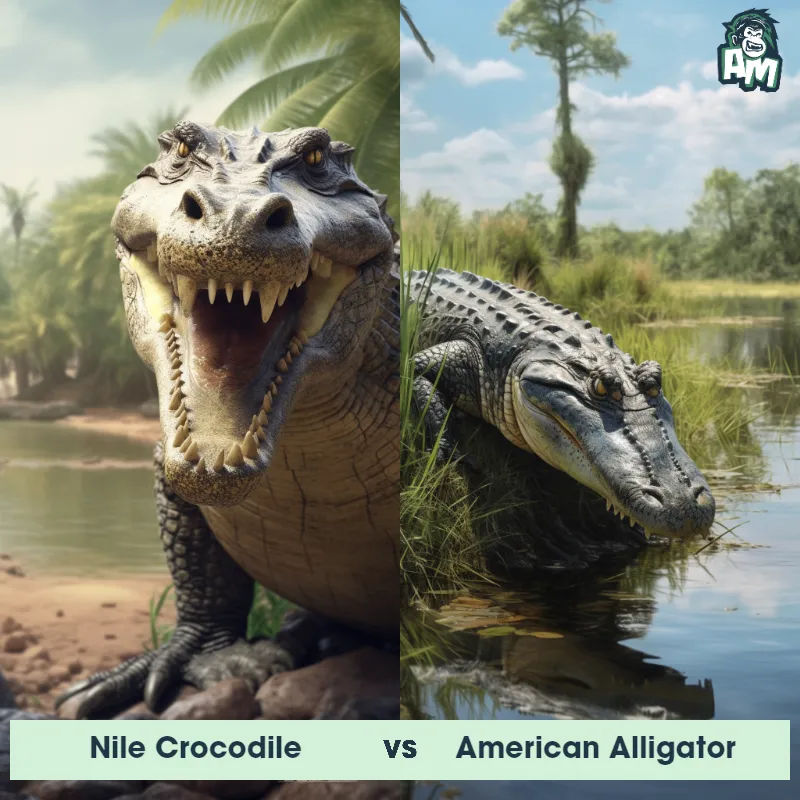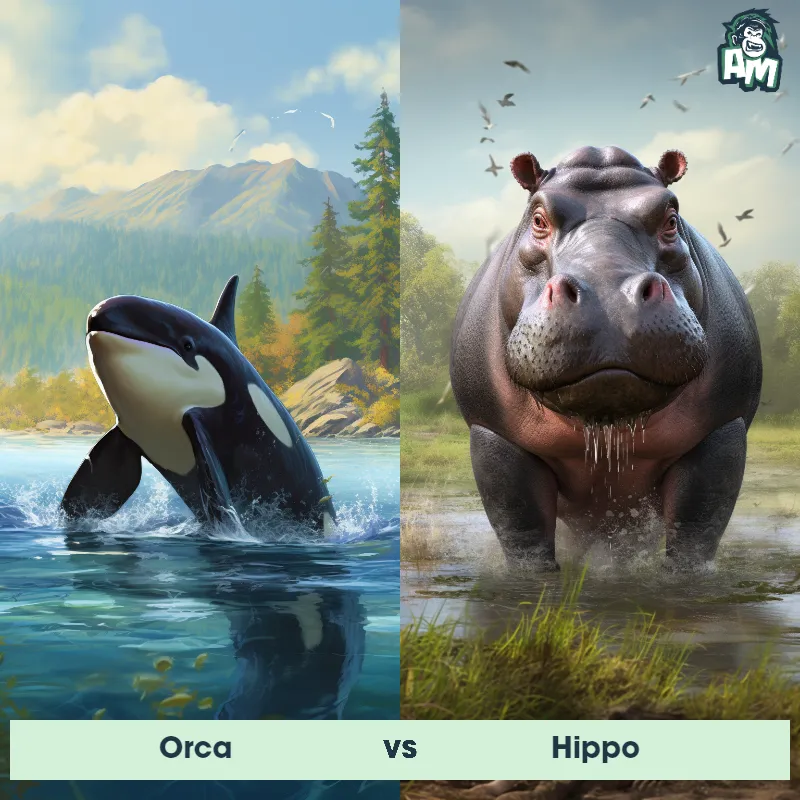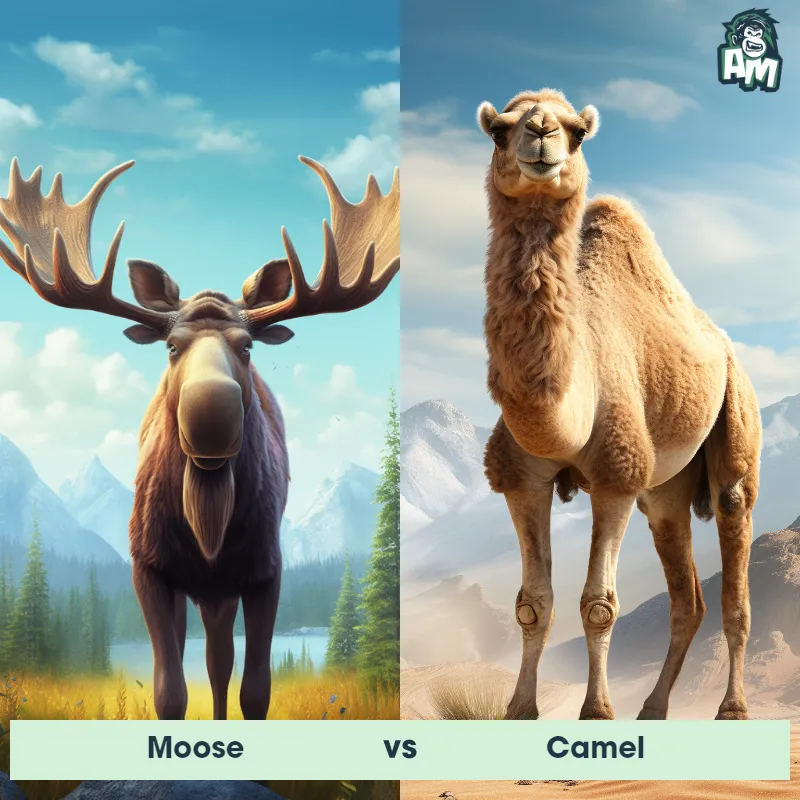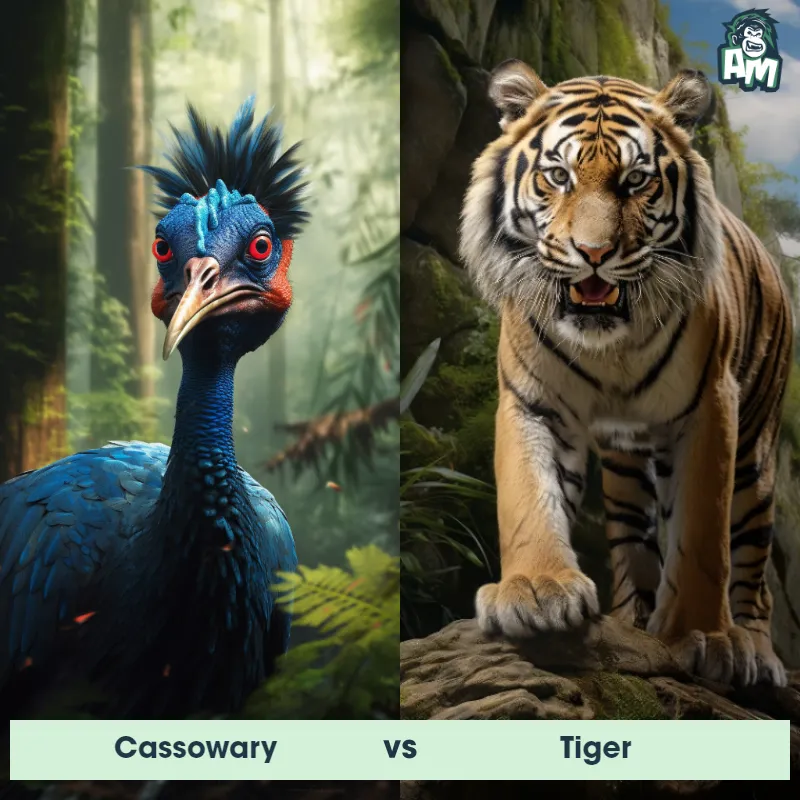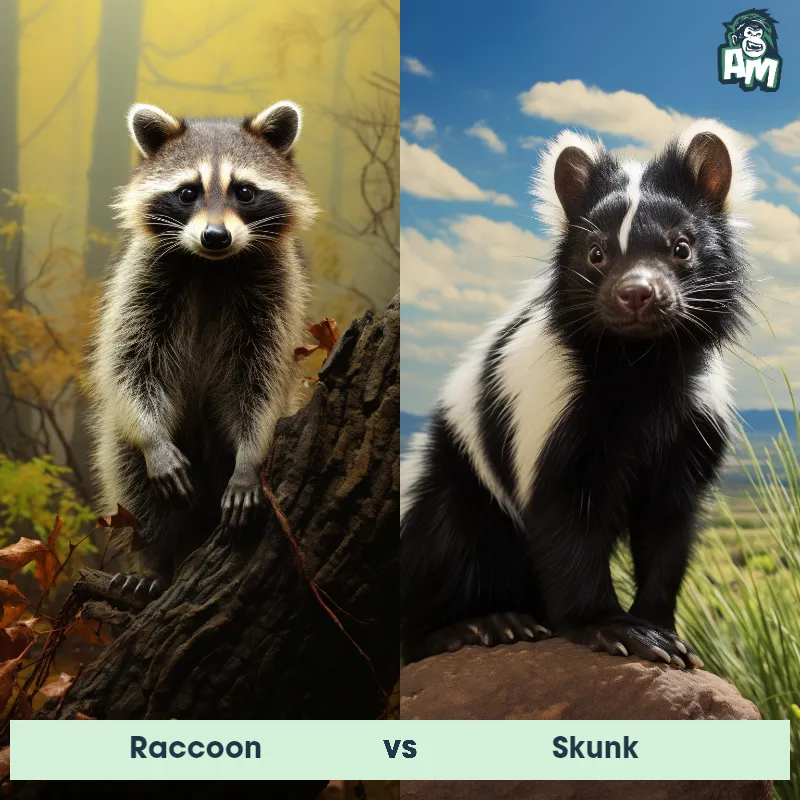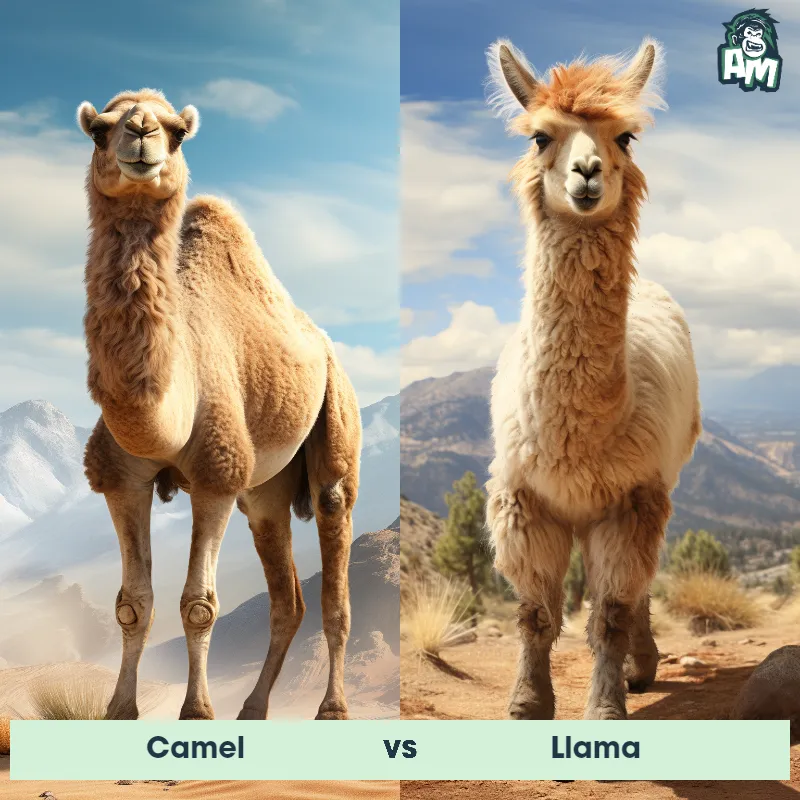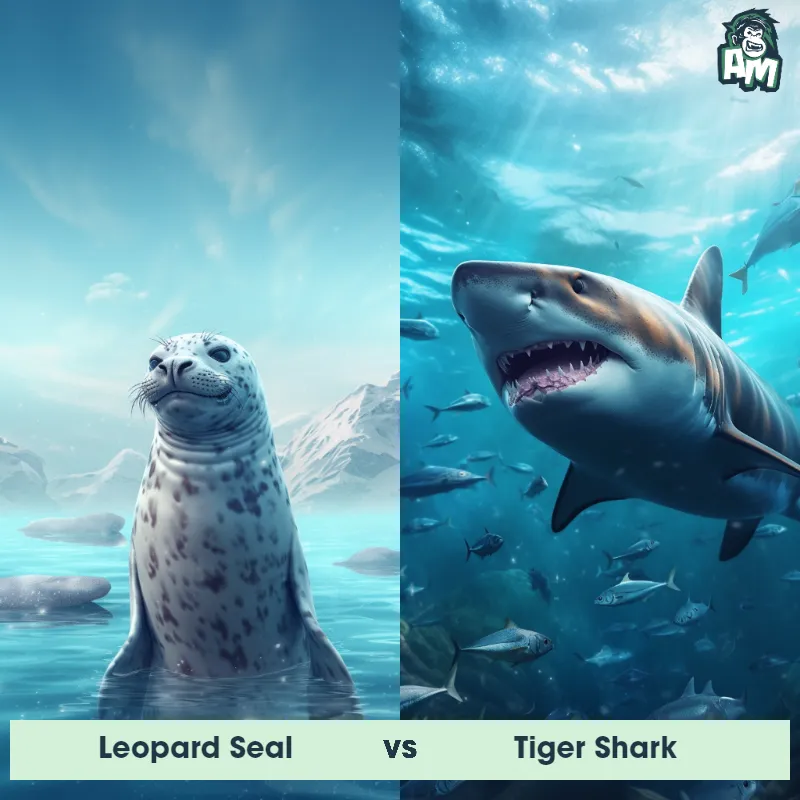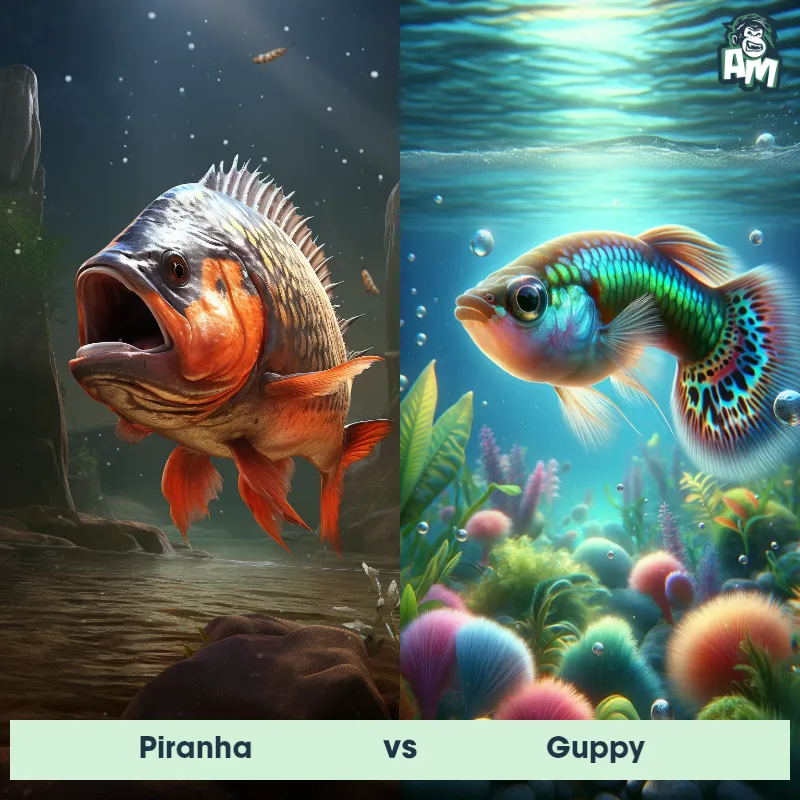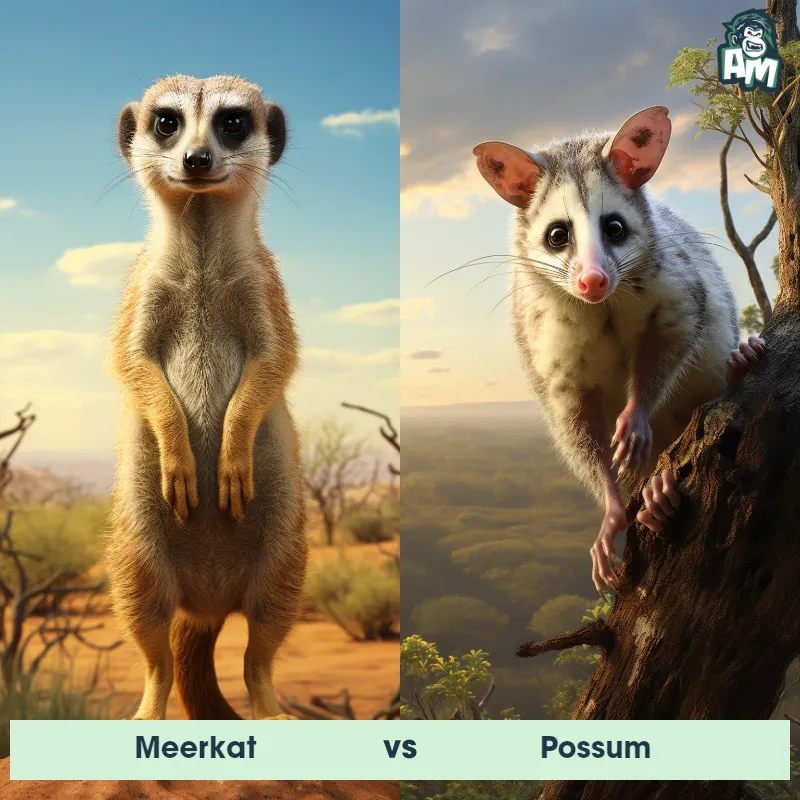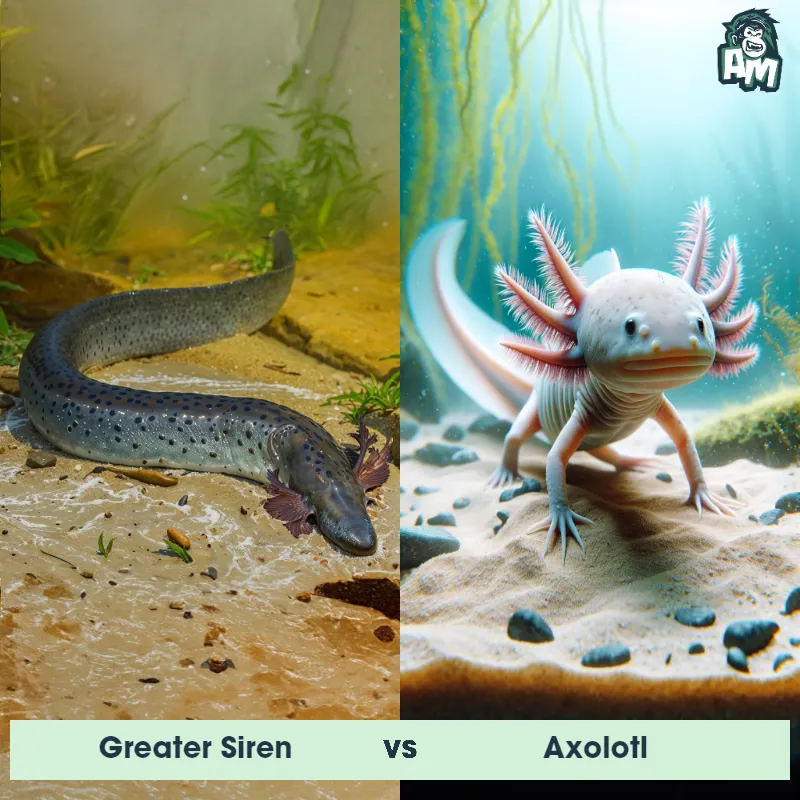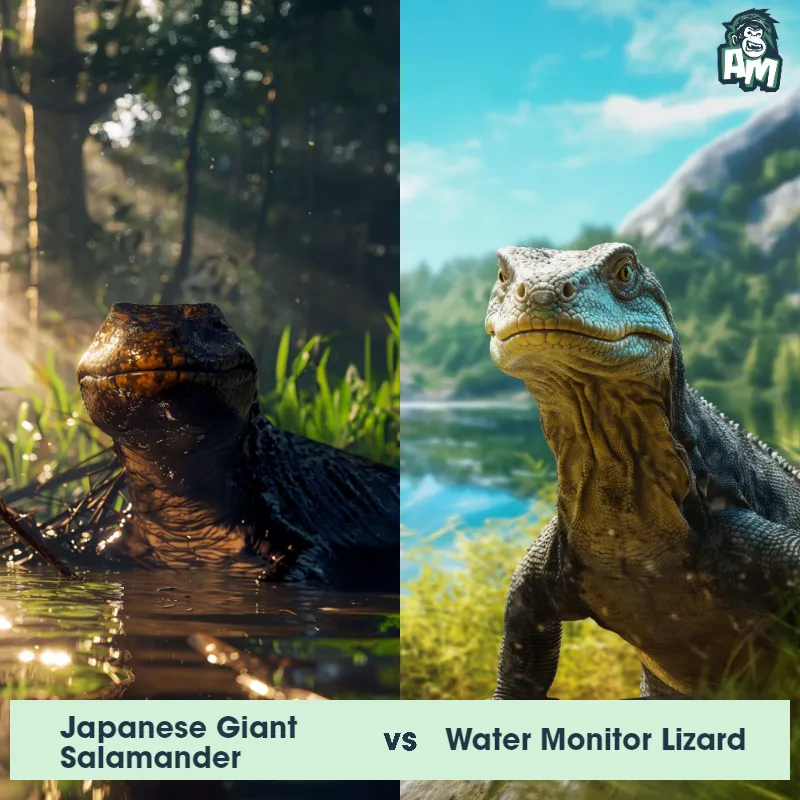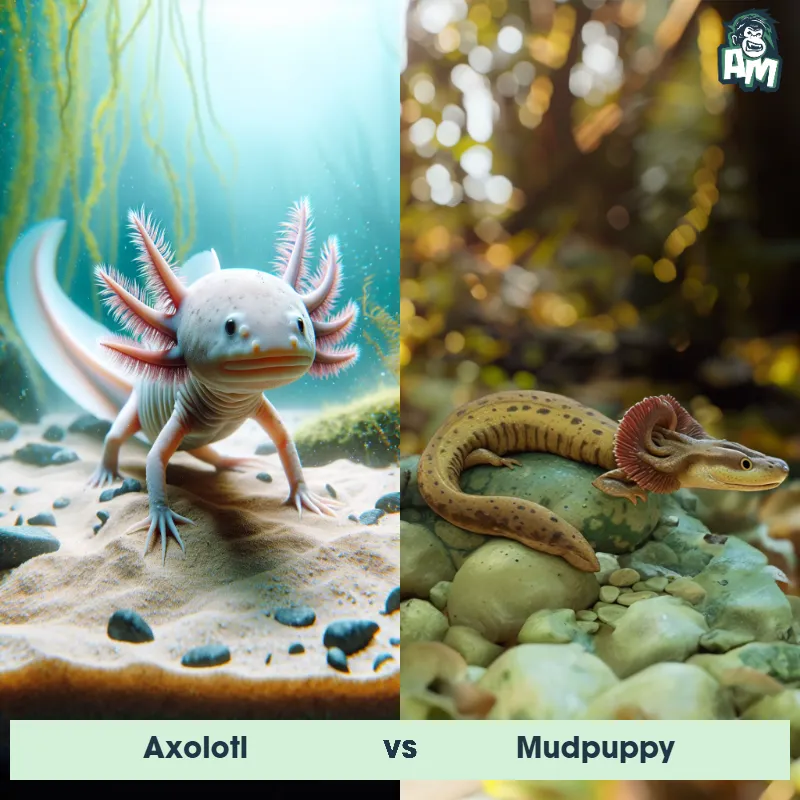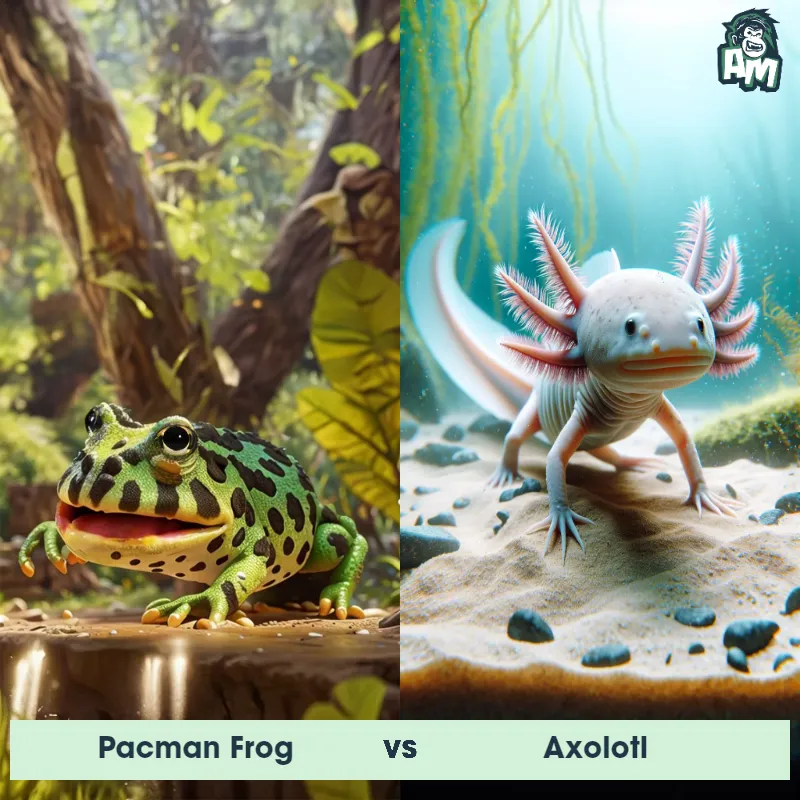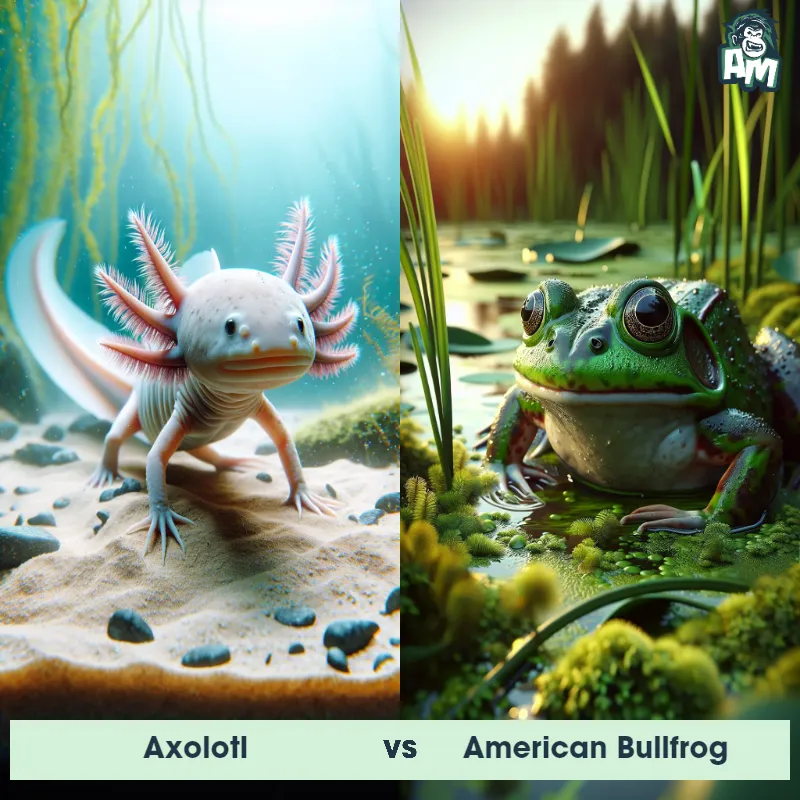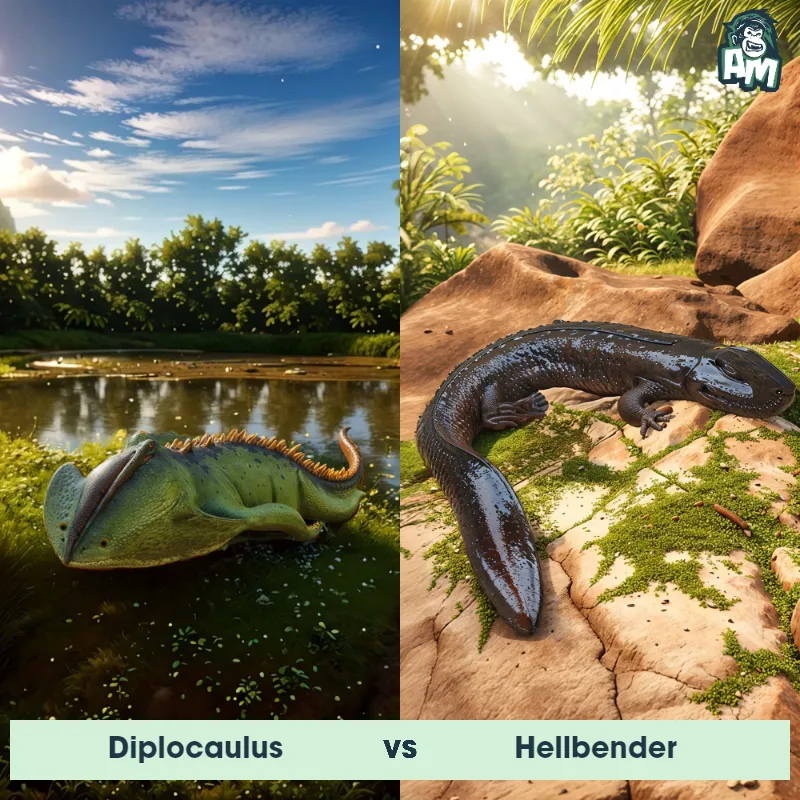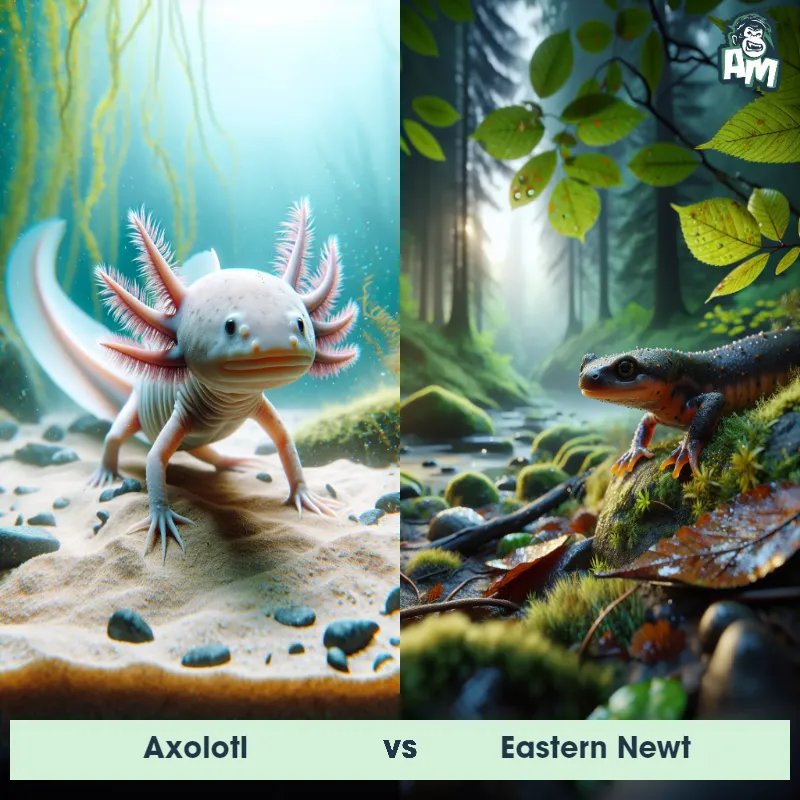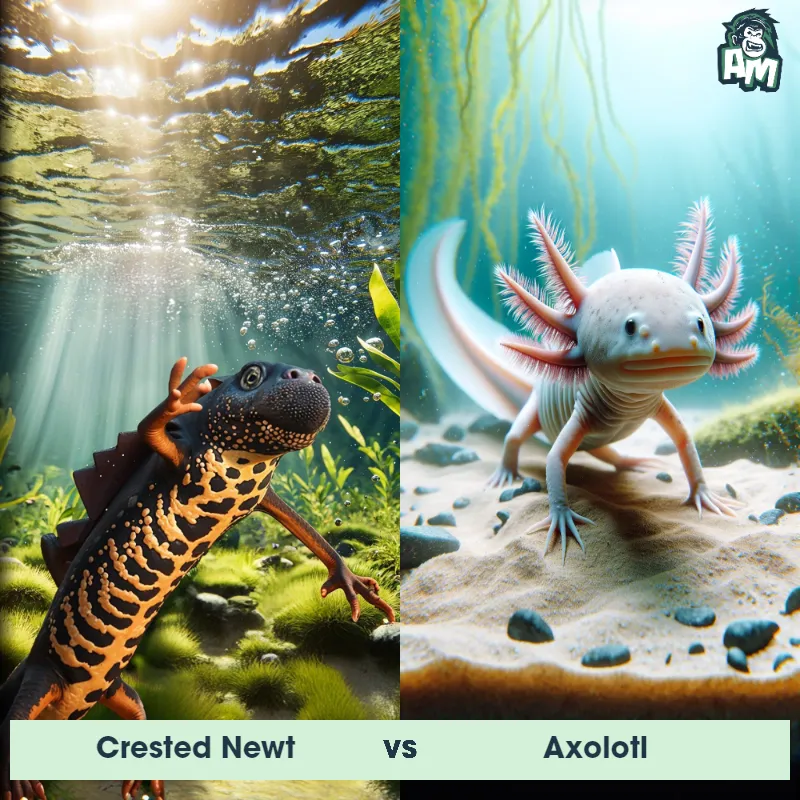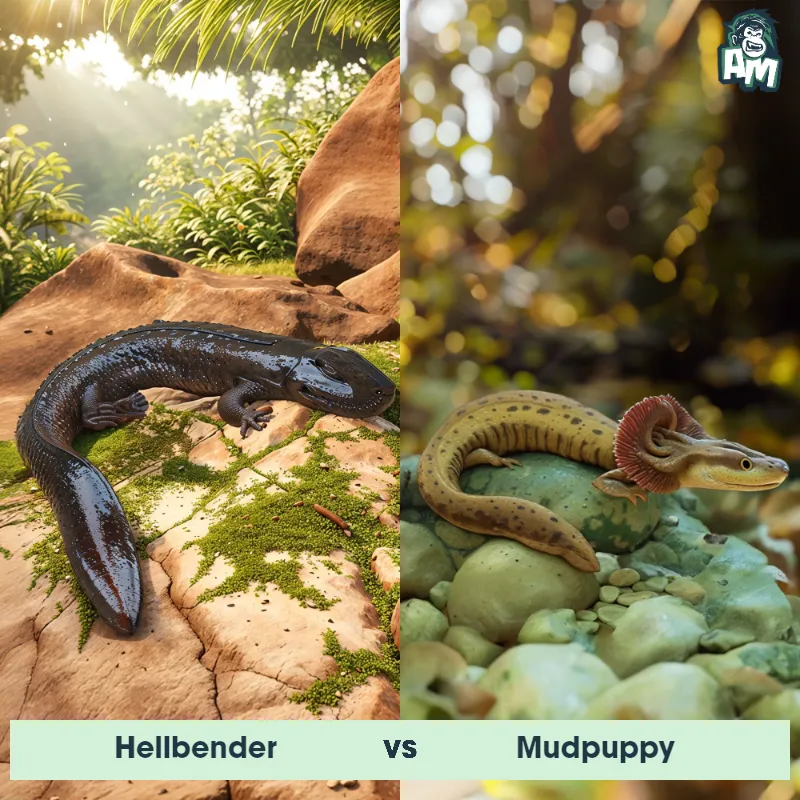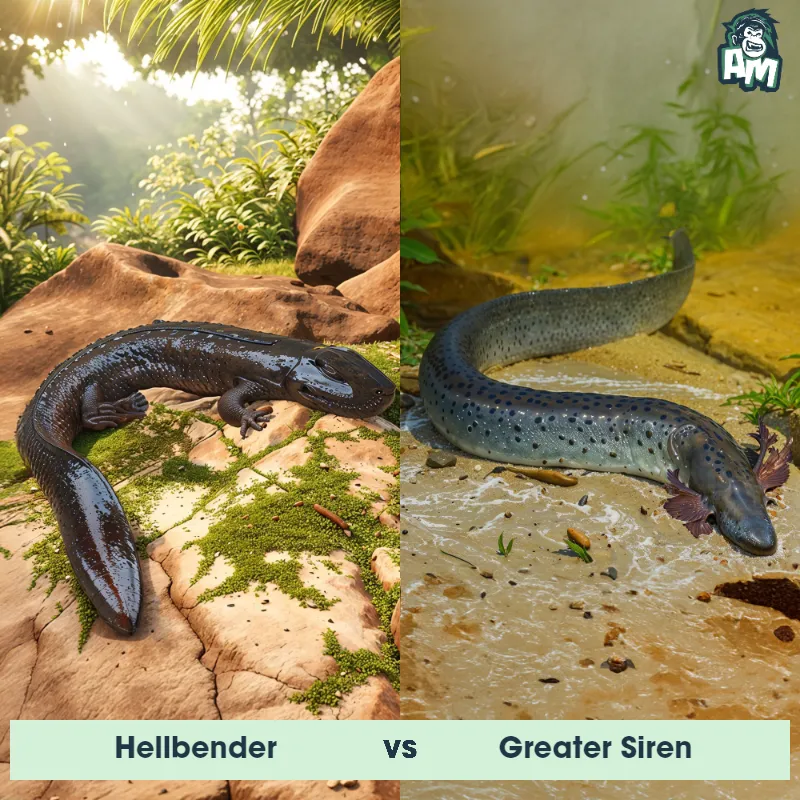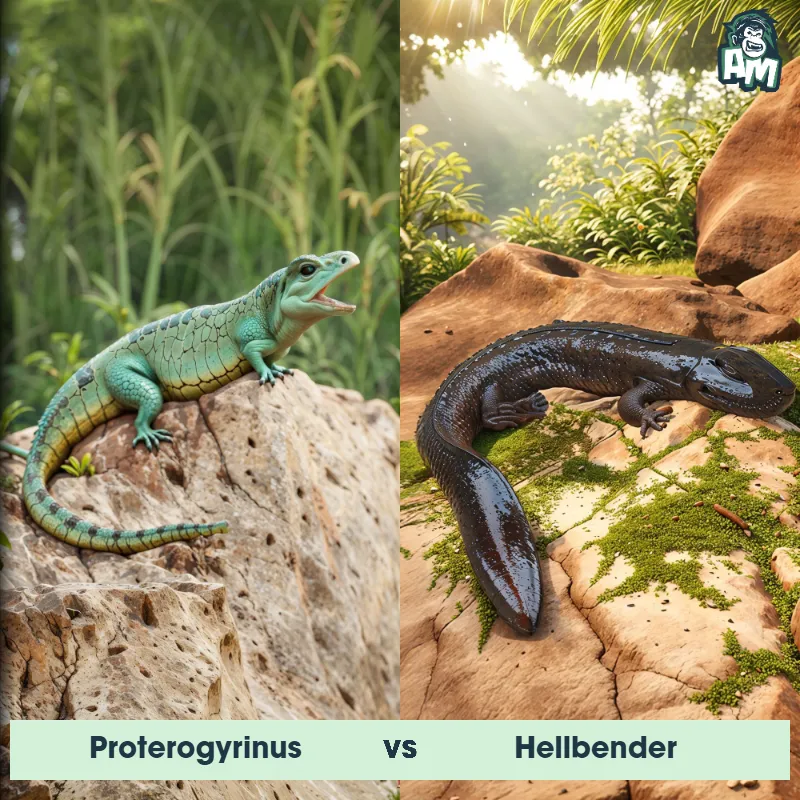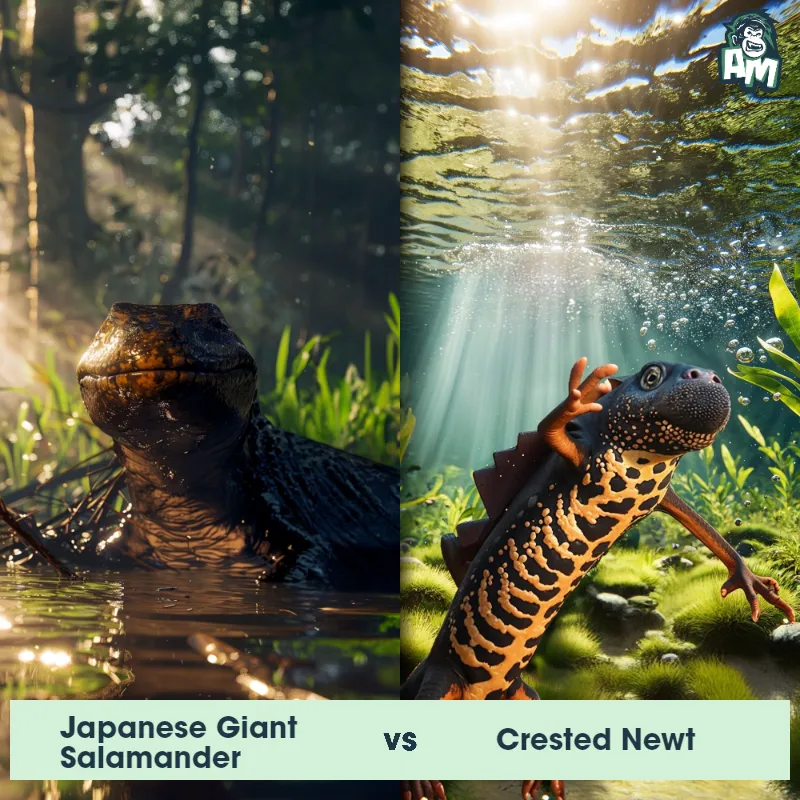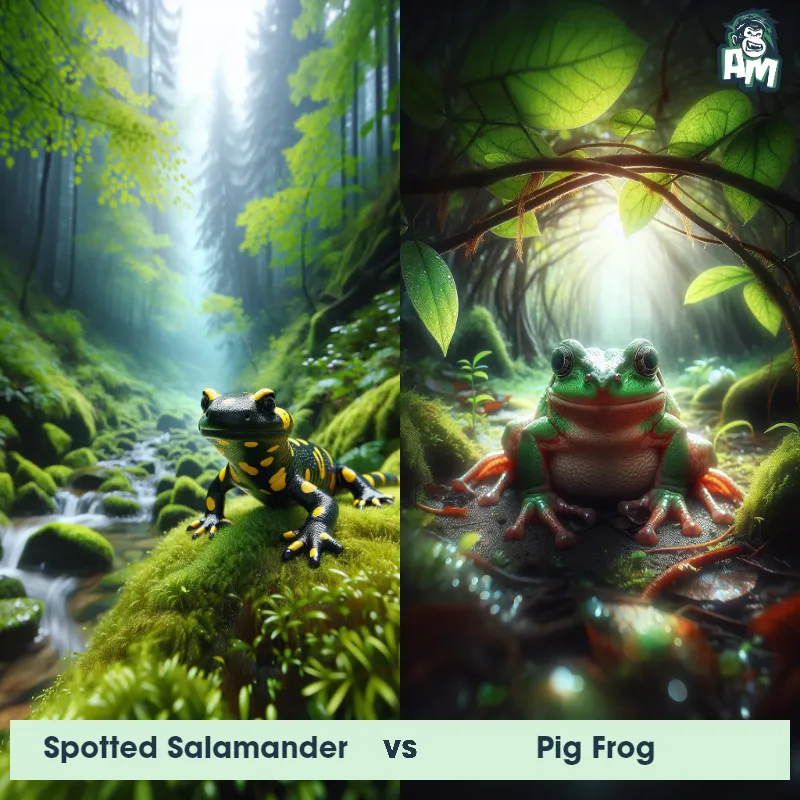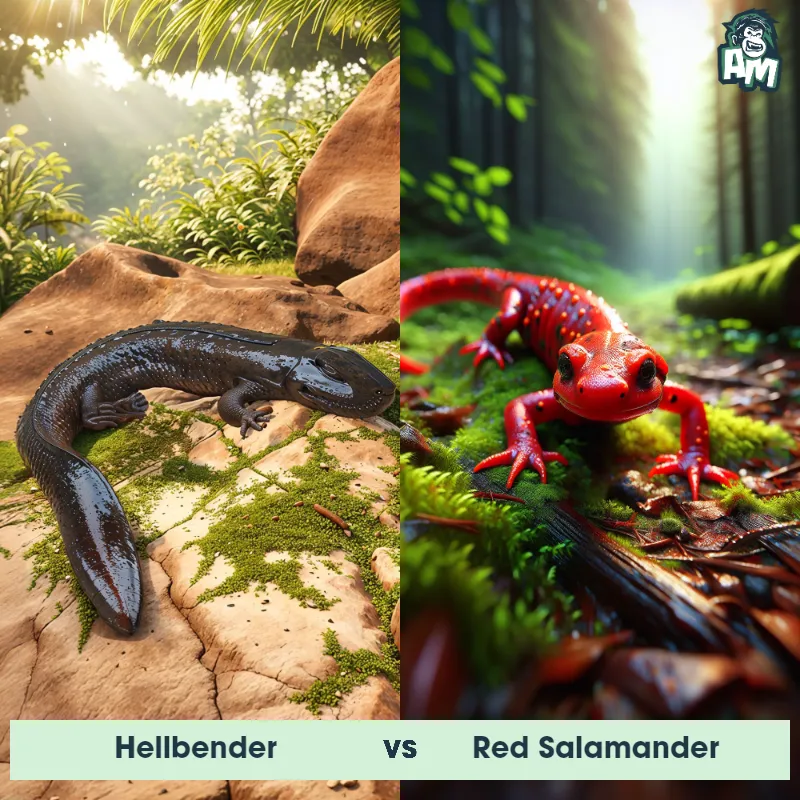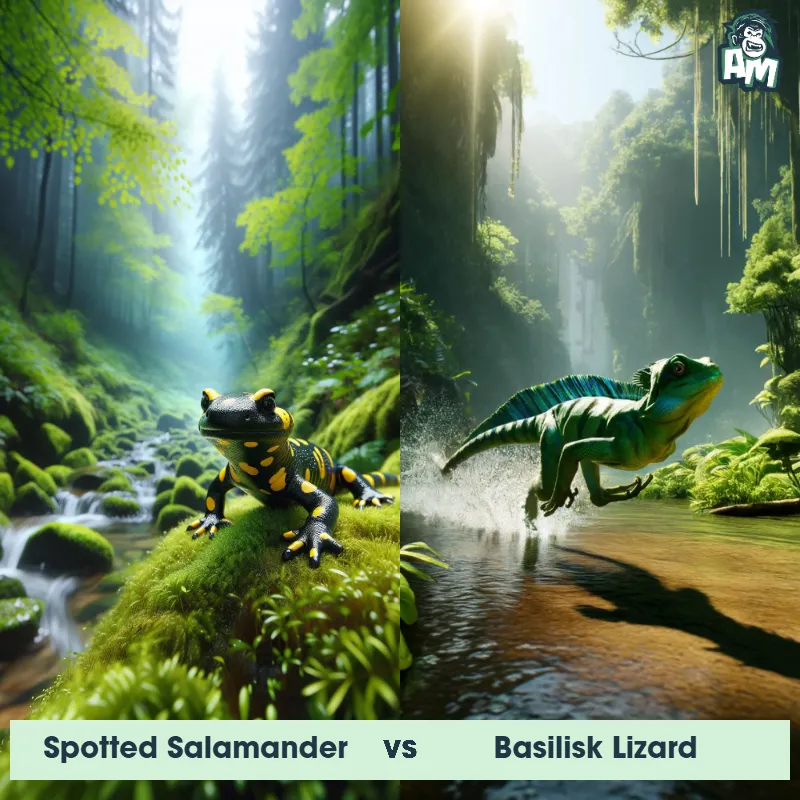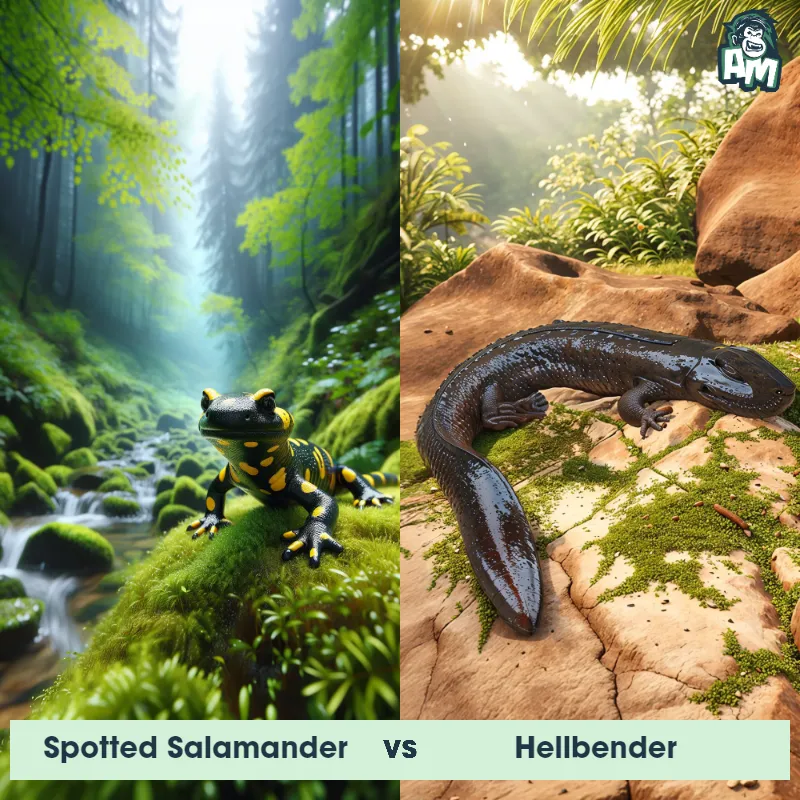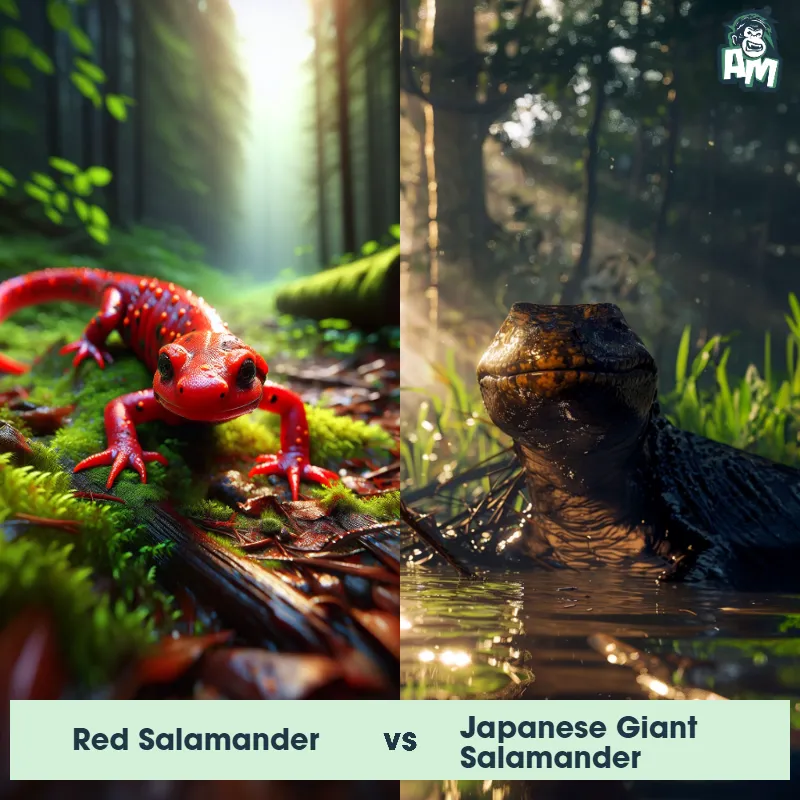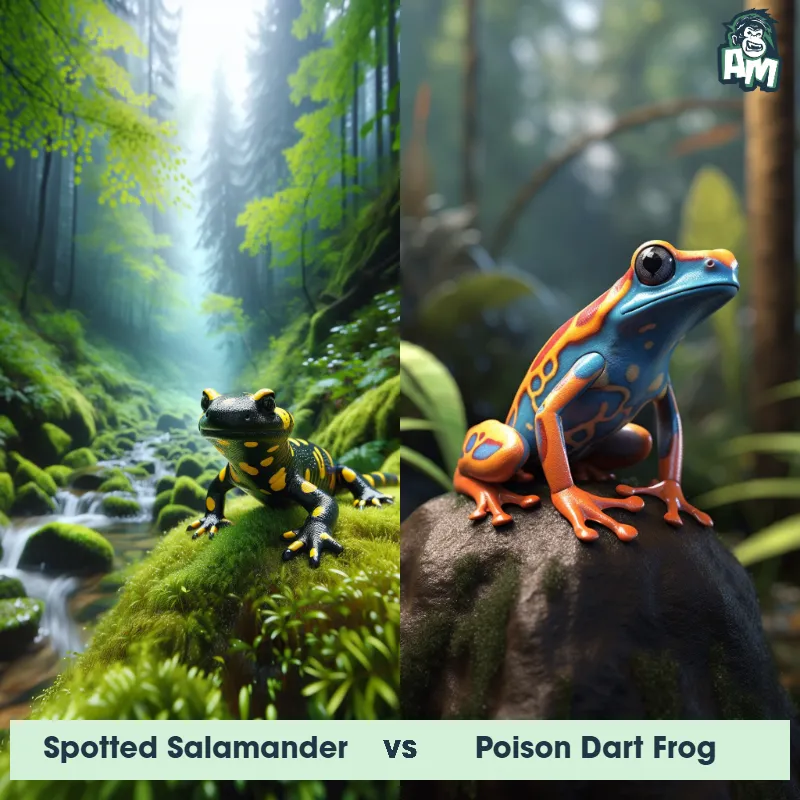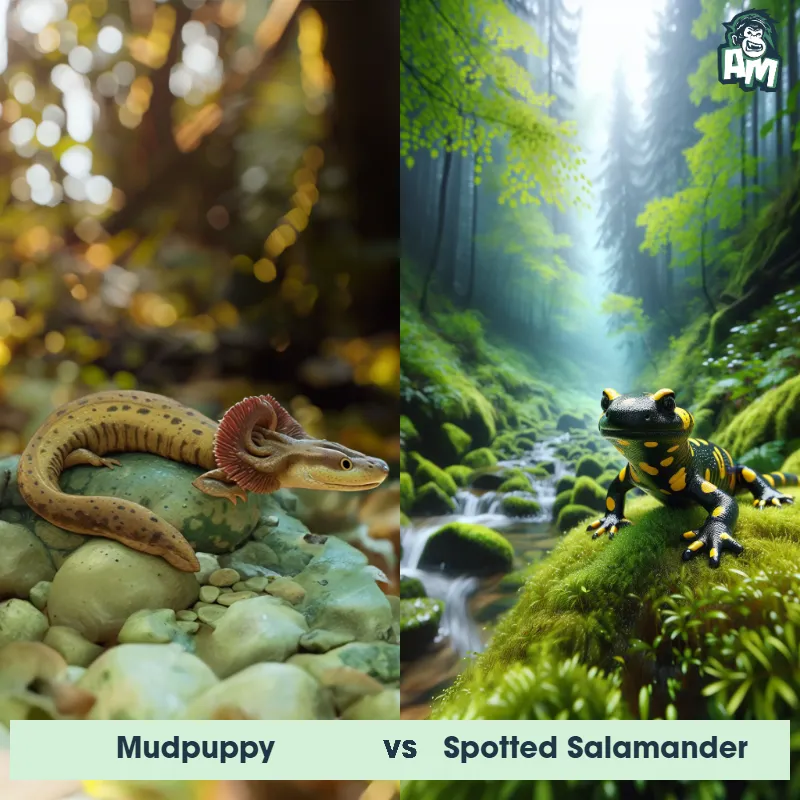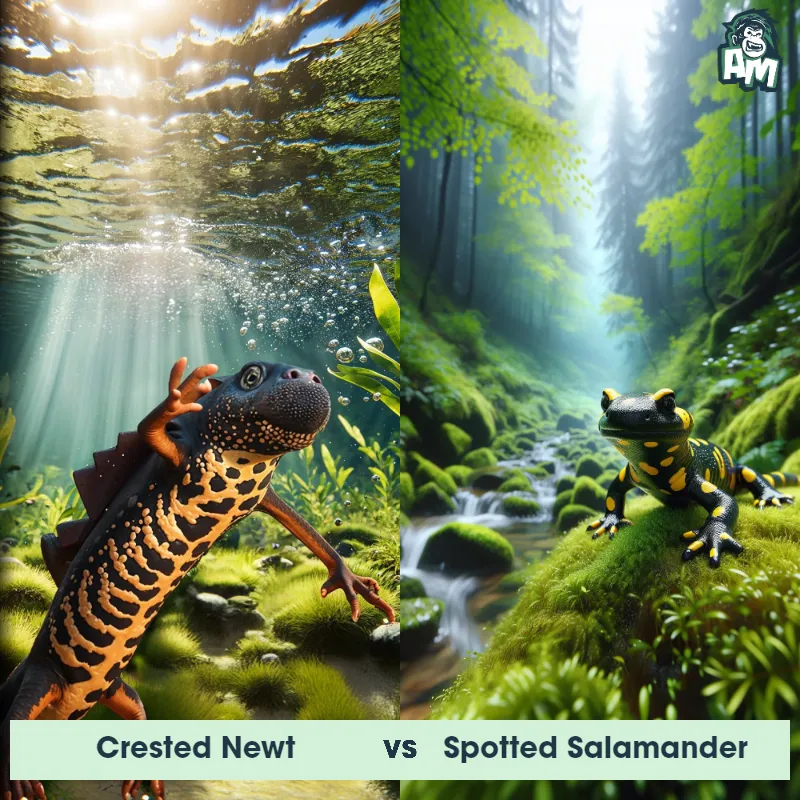Japanese Giant Salamander vs Spotted SalamanderSee Who Wins

Welcome to this epic matchup between the Japanese Giant Salamander and the Spotted Salamander! Both of these amphibians are ready to show off their skills in the arena today. Let's see who will come out on top in this three-round battle.
Contender 1: Japanese Giant Salamander
The Japanese Giant Salamander is one of the largest amphibians in the world, reaching lengths of up to five feet. It has a slimy, wrinkled skin that ranges in color from dark brown to reddish-brown, helping it blend into its rocky river habitat. They have small eyes, a broad head, and powerful limbs that aid in swimming and hunting for prey in the water.
Fun Fact: Japanese Giant Salamanders are known for their loud, eerie vocalizations, which can be heard echoing through the rivers at night.
Contender 2: Spotted Salamander
The Spotted Salamander is a large, colorful amphibian found in North America, known for its distinctive yellow spots against a dark blue or black body. It has a broad head, prominent eyes, and a long tail. These salamanders are nocturnal and spend most of their time in burrows or under logs, emerging during mating season.
Fun Fact: Spotted Salamanders are known for their unique mating ritual, where they form "mating balls" consisting of multiple males surrounding a female as she lays her eggs.
Matchup Stats
| Japanese Giant Salamander | Spotted Salamander | |
|---|---|---|
| Size | Up to 5 feet (1.5 meters) | 6-7 inches (15-18 cm) |
| Weight | Up to 55 pounds (25 kilograms) | 2-4 ounces (57-113 grams) |
| Speed | 3mph (4.8km/h) | 4-5 mph (6.4-8 km/h) |
| Key Strength | Powerful jaws for capturing prey | Poisonous skin glands |
| Biggest Weakness | Slow movement on land | Slow movement |
Current Votes
Japanese Giant Salamander vs Spotted Salamander
See Who Wins
View More Matches
Looking For More?
Similar Matches
Scientific Stats
| Japanese Giant Salamander | Spotted Salamander | |
|---|---|---|
| Scientific Name | Andrias japonicus | Ambystoma maculatum |
| Family | Cryptobranchidae | Ambystomatidae |
| Habitat | Freshwater rivers and streams with rocky bottoms | Woodlands, forests, and wetlands |
| Geography | Japan | North America |
| Diet | Fish, insects, small mammals, aquatic invertebrates | Insects, worms, slugs, and small invertebrates |
| Lifespan | 50 years - 70 years | 10 years - 20 years |
Key Differences between Japanese Giant Salamander and Spotted Salamander
- Habitat: Japanese Giant Salamanders are primarily found in fast-flowing, clean rivers and streams in Japan, while Spotted Salamanders are more commonly found in moist woodlands, forests, and swamps throughout North America.
- Size: The Japanese Giant Salamander can grow up to five feet in length, making it one of the largest salamander species in the world, while the Spotted Salamander typically reaches only about six to ten inches in length.
- Coloration: The Japanese Giant Salamander has a dark, mottled brown or black coloration with a slimy appearance, whereas the Spotted Salamander has a distinctive black body with bright yellow or orange spots covering its back and sides.
- Conservation status: The Japanese Giant Salamander is listed as 'Near Threatened' due to habitat loss and pollution, while the Spotted Salamander is considered a species of 'Least Concern' with stable populations throughout its range.
- Diet: Japanese Giant Salamanders primarily feed on fish, insects, and small amphibians, while Spotted Salamanders mainly consume earthworms, insects, and other invertebrates.
- Behavior: Japanese Giant Salamanders are nocturnal and solitary creatures, often hiding under rocks during the day, whereas Spotted Salamanders are more active at night and can be seen foraging for food on the forest floor.




